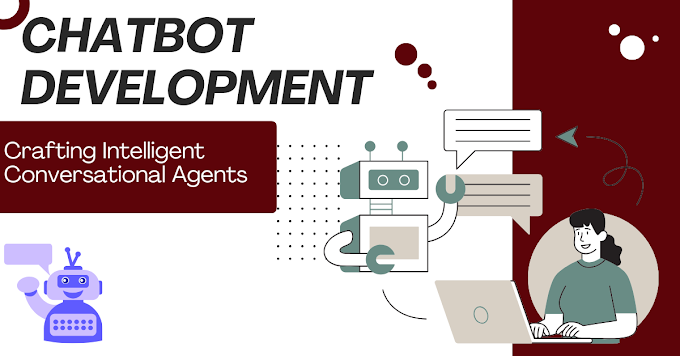Exploring the Capabilities of Python: A Comprehensive Guide to Web Development
introduction:
Python is a versatile and dynamic programming language that is popular with developers around the world. Its simplicity, readability, and extensive biology make it ideal for a variety of applications. Python is a heavyweight language in web development. On this journey, we’ll explore the power of Python, crack open its secrets, and understand how magic weaves into web development.
Chapter 1: Introduction to Python
To understand Python’s prowess in web development, you first need to understand the basics of the language. Python's syntax is nice and readable, allowing the developer to prioritize ease of use. It adopts an indentation-based approach that increases code readability and encourages a clean and organized programming style.
Chapter 2: Pythonic conceptsPython’s versatility comes from its support for many programming paradigms. Whether you want object-oriented programming (OOP), functional programming, or a hybrid of both, Python embraces simple strategies. This adaptability increases the presentability of your code and makes Python a language that evolves with your programming preferences.
Chapter 3: The Python Web
As we move deeper into web development, familiarity with Python web browsers is essential. By integrating Flask and Django, two popular web frameworks, developers are empowered to create robust, scalable, and feature-rich web applications.
Flask is small and modular, perfect for small to medium sized projects, offering flexibility and a compact approach. On the other hand, Django is a high-end web framework that provides an all-inclusive tool for building large-scale applications, complete with an ORM (Object-Relational Mapping) framework and an admin interface
Chapter 4: Creating Dynamic Web Pages with Flask
In this chapter, we’ll dive into the world of Flask, creating dynamic web pages with ease. Flask's simplicity doesn't compromise its power, and we'll explore techniques, templates, and how to handle request/response cycles to create interactive and engaging web applications From mailing form handling to database integration with Flask, Flask empowers developers to bring their ideas to life with minimal effort.
Chapter 5: Django Unchained - Build scalable web applicationsDjango is the undisputed winner for those who want to build robust and scalable web applications. This chapter will unleash the power of Django and take you through its battery-filled philosophy. From setting up a project to using the built-in admin interface, Django simplifies the development process, allowing you to focus on building the necessary features
Chapter 6: Data Magic with PythonData is the lifeblood of many web applications, and Python excels at managing it. In this chapter, we explore how Python's rich ecosystem of libraries, including Pandas and NumPy, empowers developers to efficiently manipulate and analyze data Whether they're dealing with applications or complex data, Python provides tools to make your web application smarter and more efficient.
Chapter 4: Creating Dynamic Web Pages with Flask
In this chapter, we’ll dive into the world of Flask, creating dynamic web pages with ease. Flask's simplicity doesn't compromise its power, and we'll explore techniques, templates, and how to handle request/response cycles to create interactive and engaging web applications From mailing form handling to database integration with Flask, Flask empowers developers to bring their ideas to life with minimal effort.
Chapter 5: Django Unchained - Build scalable web applicationsDjango is the undisputed winner for those who want to build robust and scalable web applications. This chapter will unleash the power of Django and take you through its battery-filled philosophy. From setting up a project to using the built-in admin interface, Django simplifies the development process, allowing you to focus on building the necessary features
Chapter 6: Data Magic with PythonData is the lifeblood of many web applications, and Python excels at managing it. In this chapter, we explore how Python's rich ecosystem of libraries, including Pandas and NumPy, empowers developers to efficiently manipulate and analyze data Whether they're dealing with applications or complex data, Python provides tools to make your web application smarter and more efficient.
Conclusion: Pythonic Odyssey
Python is not just a language; He’s a partner, a mentor, a creative force. Its simplicity, coupled with a large ecosystem of libraries and systems, makes it ideal for developers at all levels. Whether you’re building your own blog, a dynamic portfolio, or a large web application, Python provides the tools and flexibility you need to make your vision a reality
So, embark on this Pythonic odyssey, embrace the beauty of the language, and let your creativity flourish in the world of web development. The possibilities are limitless, and Python is your trusty wand, ready to turn your code into magic.
Let's outline a structured learning path from beginner to advanced Python.
Level 1: Getting Started - Basics of Python
- Introduction to Python:
- Install Python on your system.
- Basic Syntax:
- Learn about variables, data types (integers, floats, strings), and basic operations.
- Control Flow:
- Explore if statements, loops (for, while), and control structures.
- Functions:
- Define and call functions.
- Understand parameters, return values, and scope.
- Data Structures:
- Explore lists, tuples, sets, and dictionaries.
- File Handling:
- Read from and write to files.
Example 1: Basic Syntax
Example 2: Control Flow
Example 3: Functions
- Error Handling:
- Learn about exceptions and how to handle errors using try-except blocks.
- Modules and Packages:
- Understand how to organize code into modules and packages.
- Explore the Python Standard Library.
- Object-Oriented Programming (OOP):
- Grasp the principles of OOP: classes, objects, inheritance, polymorphism, encapsulation, and abstraction.
- Working with Libraries:
- Learn to use external libraries such as NumPy for numerical operations and requests for HTTP requests.
Example 4: Error Handling
Example 5: Modules and Packages
Level 3: Advanced Python
- Decorators and Generators:
- Explore decorators for modifying the behavior of functions.
- Understand generators for lazy evaluation.
- Concurrency and Parallelism:
- Learn about threading and multiprocessing for concurrent and parallel programming.
- Explore the asyncio module for asynchronous programming.
- Advanced-Data Structures:
- Dive deeper into collections like collections. named tuple, deque, and Counter.
- Metaclasses:
- Understand metaclasses for advanced class customization.
- Functional Programming:
- Explore functional programming concepts like higher-order functions and lambda functions.
- Understand the map, filter, and reduce functions.
Level 4: Specialized Topics
- Web Development with Flask/Django:
- Learn web development basics using Flask for simplicity or Django for a more comprehensive framework.
- Data Science with Python:
- Introduction to libraries like Pandas, NumPy, and Matplotlib for data manipulation and visualization.
- Machine Learning:
- Explore machine learning with libraries like sci-kit-learn and TensorFlow.
- Network Programming:
- Understand socket programming and network protocols.
- Cybersecurity with Python:
- Explore security-related libraries and tools.
Level 5: Mastery and Expertise
- Contributing to Open Source:
- Get involved in open-source projects to gain real-world experience.
- Advanced Web Frameworks (FastAPI, Pyramid):
- Explore alternative web frameworks beyond Flask and Django.
- Performance Optimization:
- Learn techniques for optimizing code performance.
- Data Structures and Algorithms:
- Deepen your understanding of algorithms and data structures.
- Writing Clean Code:
- Focus on code readability, maintainability, and best practices.
- System Design:
- Learn to design scalable and maintainable systems.
Remember, the key to mastering Python is consistent practice and building real-world projects








